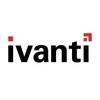Filter interviews by
Headstream Technologies Senior Software Engineer Interview Questions and Answers
21 Interview questions
Data can be transferred between controllers using various methods such as delegation, notifications, or segues.
Delegation pattern can be used to transfer data between controllers
Notifications can be used to broadcast data to multiple controllers
Segues can be used to pass data between controllers during a transition
Data can also be stored in a shared data model or database for access by multiple controllers
Collections are generic classes to store and manipulate groups of objects. Dictionary is a collection of key-value pairs. KeyValuePair is a struct that represents a key-value pair.
Collections are used to store and manipulate groups of objects.
Dictionary is a collection of key-value pairs where each key is unique.
KeyValuePair is a struct that represents a key-value pair and is used in Dictionary.
Collections and Dic...
Async and Await are keywords used in asynchronous programming in JavaScript.
Async and Await are used to handle asynchronous operations in JavaScript.
Async is used to define a function that returns a promise.
Await is used to wait for the promise to resolve before continuing the execution.
Async and Await make asynchronous code look like synchronous code.
Async and Await are supported in modern browsers and Node.js.
Abstract classes provide a blueprint for other classes to follow and cannot be instantiated.
Abstract classes are used when we want to provide a common interface for a group of related classes.
They cannot be instantiated and must be extended by a subclass.
Abstract methods are declared in the abstract class and implemented in the subclass.
They can have both abstract and non-abstract methods.
Example: Animal is an abs...
Temporary table is a table that exists temporarily in the database and is used to store intermediate results.
Temporary tables are created and used within a single session or transaction.
They are stored in the tempdb database in SQL Server.
They can be used to store intermediate results during complex queries or to simplify complex joins.
They are automatically dropped when the session or transaction ends or when the...
Optimizing query to fetch records from employee table based on city
Create an index on the City column
Use a WHERE clause with an index hint
Use a stored procedure to cache the query results
Use a materialized view to precompute the query results
SQL covered index is an index that contains all the columns needed for a query, reducing the need for table lookups.
A covered index can improve query performance by reducing the number of disk I/O operations.
It is created by including all the columns needed for a query in the index.
Covered indexes are particularly useful for queries that involve large tables or complex joins.
Example: CREATE INDEX idx_name ON table...
MVC Data Annotations are attributes used to define validation rules and metadata for model properties in ASP.NET MVC applications.
Used to validate user input on the server-side
Can be used to specify display names, format strings, and more
Examples include [Required], [StringLength], and [RegularExpression]
CLR stands for Common Language Runtime. It is a component of .NET framework that manages execution of .NET programs.
CLR is responsible for memory management, security, and exception handling.
It compiles the intermediate language code into machine code.
CLR provides a common type system and runtime environment for all .NET languages.
It allows for cross-language integration and interoperability.
Examples of languages ...
Association, Composition and Aggregation are three types of relationships between classes in object-oriented programming.
Association is a relationship between two classes where one class uses the other class as a parameter or return type.
Composition is a relationship between two classes where one class owns the other class and is responsible for its creation and destruction.
Aggregation is a relationship between tw...
Headstream Technologies Senior Software Engineer Interview Experiences
1 interview found
I applied via Naukri.com and was interviewed in Feb 2022. There were 2 interview rounds.

(24 Questions)
- Q1. How do you create a Vehicle management application? There we need to manage Car, Van, Bus, Truck, Bike and Bicycle
- Q2. What is Garbage collection? Explain
- Ans.
Garbage collection is an automatic memory management process that frees up memory occupied by objects that are no longer in use.
Garbage collection is a process of identifying and freeing up memory that is no longer in use by the program.
It is done automatically by the programming language runtime environment.
Garbage collection helps prevent memory leaks and improves program performance.
Examples of programming languages...
- Q3. What is SOLID Principle and explain about it....
- Ans.
SOLID is a set of principles for object-oriented programming to make software more maintainable, scalable, and robust.
S - Single Responsibility Principle: A class should have only one reason to change.
O - Open-Closed Principle: A class should be open for extension but closed for modification.
L - Liskov Substitution Principle: Subtypes should be substitutable for their base types.
I - Interface Segregation Principle: A c...
- Q4. What is CLR, and what will do
- Ans.
CLR stands for Common Language Runtime. It is a component of .NET framework that manages execution of .NET programs.
CLR is responsible for memory management, security, and exception handling.
It compiles the intermediate language code into machine code.
CLR provides a common type system and runtime environment for all .NET languages.
It allows for cross-language integration and interoperability.
Examples of languages that ...
- Q5. Why do we go for an abstract class and how do you implement it
- Ans.
Abstract classes provide a blueprint for other classes to follow and cannot be instantiated.
Abstract classes are used when we want to provide a common interface for a group of related classes.
They cannot be instantiated and must be extended by a subclass.
Abstract methods are declared in the abstract class and implemented in the subclass.
They can have both abstract and non-abstract methods.
Example: Animal is an abstract...
- Q6. What is Association, Composition and Aggregation
- Ans.
Association, Composition and Aggregation are three types of relationships between classes in object-oriented programming.
Association is a relationship between two classes where one class uses the other class as a parameter or return type.
Composition is a relationship between two classes where one class owns the other class and is responsible for its creation and destruction.
Aggregation is a relationship between two cla...
- Q7. In a stored procedure there are 1000 lines of statement, how do you identify a slow running query
- Ans.
Identifying slow running query in a 1000 line stored procedure
Use SQL Server Profiler to trace the stored procedure and identify the slow running query
Check the execution plan of the stored procedure to identify the slow running query
Use SET STATISTICS TIME ON to measure the execution time of each query in the stored procedure
Divide the stored procedure into smaller parts and test each part to identify the slow running...
- Q8. Why the clustered index is only one for a table
- Ans.
Clustered index is only one for a table to ensure efficient data retrieval and storage.
Clustered index determines the physical order of data in a table.
Only one clustered index can be created per table.
It is recommended to choose a column with unique and sequential values as the clustered index.
Clustered index is used for range searches and sorting.
Non-clustered indexes can be created for additional search paths.
- Q9. What is a temporary table, where it is stored, what is the lifetime
- Ans.
Temporary table is a table that exists temporarily in the database and is used to store intermediate results.
Temporary tables are created and used within a single session or transaction.
They are stored in the tempdb database in SQL Server.
They can be used to store intermediate results during complex queries or to simplify complex joins.
They are automatically dropped when the session or transaction ends or when they are...
- Q10. What is SQL covered index
- Ans.
SQL covered index is an index that contains all the columns needed for a query, reducing the need for table lookups.
A covered index can improve query performance by reducing the number of disk I/O operations.
It is created by including all the columns needed for a query in the index.
Covered indexes are particularly useful for queries that involve large tables or complex joins.
Example: CREATE INDEX idx_name ON table_name...
- Q11. What is table variable and its lifetime
- Ans.
Table variable is a variable that holds a table-like structure in memory for temporary use.
Table variables are declared using the DECLARE keyword in SQL Server.
They can be used to store temporary data within a stored procedure or a batch of SQL statements.
Table variables have a scope limited to the batch or stored procedure in which they are declared.
They are automatically dropped when the batch or stored procedure com...
- Q12. There are 1 lakh records on an employee table. How do we can optimize the below query? SELECT * FROM dbo.Employees WHERE City="Chennai"
- Ans.
Optimizing query to fetch records from employee table based on city
Create an index on the City column
Use a WHERE clause with an index hint
Use a stored procedure to cache the query results
Use a materialized view to precompute the query results
- Q13. Can we create the index for a varchar column (based on the previous question)?
- Ans.
Yes, we can create an index for a varchar column to improve query performance.
Indexes can be created on varchar columns to speed up searches.
Example: CREATE INDEX idx_name ON table_name (varchar_column);
Consider the length of the varchar; longer lengths may impact performance.
Partial indexes can be created for large varchar columns: CREATE INDEX idx_name ON table_name (varchar_column(10));
Using indexes on varchar colum...
- Q14. How the URL acts in MVC, Which one called first (Model, View and Controller)
- Q15. What is MSDB in SQL Server
- Ans.
MSDB is a system database in SQL Server used for managing SQL Server Agent jobs, alerts, and operators.
MSDB stands for Microsoft SQL Server Database
It stores metadata and configuration information for SQL Server Agent
It contains tables for job scheduling, alerts, and operators
It also stores backup and restore history information
- Q16. What is SQL NOLOCK..?
- Ans.
SQL NOLOCK is a query hint used to allow a SELECT statement to read data from a table without acquiring a shared lock.
NOLOCK is used to improve query performance by allowing dirty reads
It is not recommended to use NOLOCK in production environments
Other query hints include UPDLOCK, ROWLOCK, and XLOCK
- Q17. What is Async and Await
- Ans.
Async and Await are keywords used in asynchronous programming in JavaScript.
Async and Await are used to handle asynchronous operations in JavaScript.
Async is used to define a function that returns a promise.
Await is used to wait for the promise to resolve before continuing the execution.
Async and Await make asynchronous code look like synchronous code.
Async and Await are supported in modern browsers and Node.js.
- Q18. Explain about Collections Vs Dictionary Vs KeyValuePair
- Ans.
Collections are generic classes to store and manipulate groups of objects. Dictionary is a collection of key-value pairs. KeyValuePair is a struct that represents a key-value pair.
Collections are used to store and manipulate groups of objects.
Dictionary is a collection of key-value pairs where each key is unique.
KeyValuePair is a struct that represents a key-value pair and is used in Dictionary.
Collections and Dictiona...
- Q19. Can we use SQL Functions on the JOIN Clause
- Ans.
Yes, SQL Functions can be used on the JOIN Clause.
SQL Functions can be used on the JOIN Clause to manipulate the data before joining.
Examples of SQL Functions that can be used on the JOIN Clause are CONCAT, SUBSTRING, and DATE_FORMAT.
Using SQL Functions on the JOIN Clause can improve query performance and reduce the amount of data transferred.
- Q20. What a SQL Function returns (what are the return type of function)
- Ans.
SQL functions return a single value of a specified data type.
SQL functions can return various data types such as integer, string, date, etc.
The return type of a function is specified in the function declaration.
Functions can be used in SELECT, WHERE, and other SQL statements to manipulate data.
Examples of SQL functions include COUNT, AVG, MAX, MIN, and CONCAT.
Functions can also be user-defined using the CREATE FUNCTION...
- Q21. What is MVC Data Annotations
- Ans.
MVC Data Annotations are attributes used to define validation rules and metadata for model properties in ASP.NET MVC applications.
Used to validate user input on the server-side
Can be used to specify display names, format strings, and more
Examples include [Required], [StringLength], and [RegularExpression]
- Q22. Form validations and model validation
- Q23. What is partial views and how it is differs from View
- Ans.
Partial views are reusable components of a view that can be rendered within other views.
Partial views are used to break down complex views into smaller, more manageable pieces.
They can be used to display common elements across multiple views, such as headers or footers.
Partial views can be rendered within other views using the @Html.Partial() method in ASP.NET MVC.
They can also be passed data from the parent view using...
- Q24. How to transfer data from controller to controller
- Ans.
Data can be transferred between controllers using various methods such as delegation, notifications, or segues.
Delegation pattern can be used to transfer data between controllers
Notifications can be used to broadcast data to multiple controllers
Segues can be used to pass data between controllers during a transition
Data can also be stored in a shared data model or database for access by multiple controllers
Interview Preparation Tips
- ASP.Net MVC
- OOPS
- SQL Server
Was asked based on the working experience, how do you implement this?
Skills evaluated in this interview
Top trending discussions






Interview questions from similar companies

Senior Software Engineer Interview Questions & Answers
HCL Infosystemsposted on 3 Sep 2024
(1 Question)
- Q1. Basic all type questions
(1 Question)
- Q1. Project related and technology se related

Senior Software Engineer Interview Questions & Answers
HCL Infosystemsposted on 6 Feb 2024
I applied via Recruitment Consulltant and was interviewed before Feb 2023. There was 1 interview round.
(2 Questions)
- Q1. 2,3 Round technical
- Q2. Basic .net ,MVC framework concepts,SQL logical questions

Senior Software Engineer Interview Questions & Answers
Northcorp Softwareposted on 22 May 2025
- Q1. "Can you describe a complex system you have designed or worked on? what were the key architectural decisions you made?"
- Q2. "How do you mentor junior developers and contribute to team growth?"

I applied via Campus Placement and was interviewed before Aug 2021. There were 3 interview rounds.
Easy aptitude questions based on logical reasoning and basic maths.
Easy logic-based question based on arrays and strings with some javascript output-based questions.
Discussion about the projects that I made in college and the tech stack I know.
1 basic array/string-based problem.
Interview Preparation Tips
PS: This was in 2015 but as per my knowledge the process is still the same.

I appeared for an interview before Jun 2016.
Interview Questionnaire
1 Question
- Q1. Java related questions on Oops concept and Multithreading
Interview Preparation Tips
Experience: Simple aptitude and reasoning questions little java based programming
Tips: Basic programming knowledge and good aptitude
Duration: 1 hour
Total Questions: 60
Round: Technical Interview
Experience: Normal questions on Java, basic programming questions like reverse no. , String related and logical coding
Tips: What u mentioned on your resume go through that only, they will not ask apart from your resume
Skills: How Well You Are Able To Communicate What You Wanted To Tell, Programming
College Name: SRCEM

I appeared for an interview before Aug 2016.
Interview Preparation Tips
Experience: I am vinothkumar from Dindugal, I was studied computer engineering in Madurai institute of engineering and technology at sivagangai, I am quality controller in RR DONNELLY at Chennai, my experience 2 years, my family staying in native, my father palanichami he is a former, my mother tamilselvi she is home maker and my one yelder brother Vijayakumar he is driver, I am interested area software engineer, my hobbies are listening music, reading book and news paper, playing and watching cricket
Tips: No comments
Round: Test
Experience: I am vinothkumar from Dindugal, I was studied computer engineering in Madurai institute of engineering and technology at sivagangai, I am quality controller in RR DONNELLY at Chennai, my experience 2 years, my family staying in native, my father palanichami he is a former, my mother tamilselvi she is home maker and my one yelder brother Vijayakumar he is driver, I am interested area software engineer, my hobbies are listening music, reading book and news paper, playing and watching cricket
Tips: No comments
Total Questions: 15
Round: Test
Experience: See my mentality
Tips: No comments
Duration: 45 minutes
Round: Group Discussion
Experience: Communication
Tips: No comments
Skills: Communication And Confidence

I applied via Naukri.com and was interviewed in Aug 2021. There was 1 interview round.
(1 Question)
- Q1. Java basics oops selenium framework
Interview Preparation Tips

Interview Questionnaire
1 Question
- Q1. Difference between for and for each
- Ans.
For loop is used for iterating over a range of values while for each loop is used for iterating over elements of an array.
For loop is used when the number of iterations is known beforehand.
For each loop is used when the number of iterations is not known beforehand.
For loop can be used with any iterable object.
For each loop can only be used with arrays and other iterable objects.
For loop uses an index variable to access...

I applied via Naukri.com and was interviewed in Sep 2020. There were 3 interview rounds.
Interview Questionnaire
5 Questions
- Q1. Which collection class is used to represent key-value pairs?
- Ans.
The HashMap class is used to represent key-value pairs in Java.
HashMap is a part of the Java Collections Framework.
It allows null values and only one null key.
It provides constant-time performance for basic operations like get and put.
Example: HashMap<String, Integer> map = new HashMap<>();
- Q2. What is abstraction?
- Ans.
Abstraction is the process of simplifying complex systems by focusing on essential details and hiding unnecessary complexities.
Abstraction allows us to create models or representations of real-world objects or systems in software.
It helps in managing complexity by breaking down a system into smaller, more manageable parts.
Abstraction provides a level of indirection, allowing changes to be made in one part of the system...
- Q3. Why is try-catch used in JAVA?
- Ans.
try-catch is used in Java to handle exceptions and prevent program crashes.
try-catch blocks are used to catch and handle exceptions that may occur during program execution.
It allows the program to gracefully handle errors and prevent the program from crashing.
The try block contains the code that may throw an exception, and the catch block handles the exception.
Multiple catch blocks can be used to handle different types...
- Q4. Which statement will we use if we want to select a statement based on integer inputs?
- Ans.
The statement to use for selecting based on integer inputs is the 'switch' statement.
The 'switch' statement allows for multiple cases to be evaluated based on the value of an integer input.
Each case represents a possible value of the input, and the corresponding code block is executed if the value matches.
The 'switch' statement also provides a 'default' case which is executed if none of the cases match the input value.
...
- Q5. Explain your project.
Interview Preparation Tips
Prepare a good project
Skills evaluated in this interview
Headstream Technologies Interview FAQs
Some of the top questions asked at the Headstream Technologies Senior Software Engineer interview -
Tell us how to improve this page.
Interview Questions for Popular Designations
- Software Developer Interview Questions
- Software Engineer Interview Questions
- Senior Engineer Interview Questions
- System Engineer Interview Questions
- Associate Software Engineer Interview Questions
- Project Engineer Interview Questions
- Senior Software Developer Interview Questions
- Lead Engineer Interview Questions
- Show more
Senior Software Engineer Interview Questions from Similar Companies
|
Software Engineer
4
salaries
| ₹5 L/yr - ₹10.4 L/yr |
|
HR Manager
4
salaries
| ₹7.2 L/yr - ₹9.6 L/yr |
|
Senior Quality Analyst
4
salaries
| ₹6 L/yr - ₹8.1 L/yr |
|
Senior Technical Developer Lead
4
salaries
| ₹18.5 L/yr - ₹25 L/yr |
|
Senior Business Analyst
3
salaries
| ₹14 L/yr - ₹15.3 L/yr |

HCL Infosystems

Northcorp Software

Jetking Infotrain

Apex CoVantage
- Home >
- Interviews >
- Headstream Technologies Interview Questions













